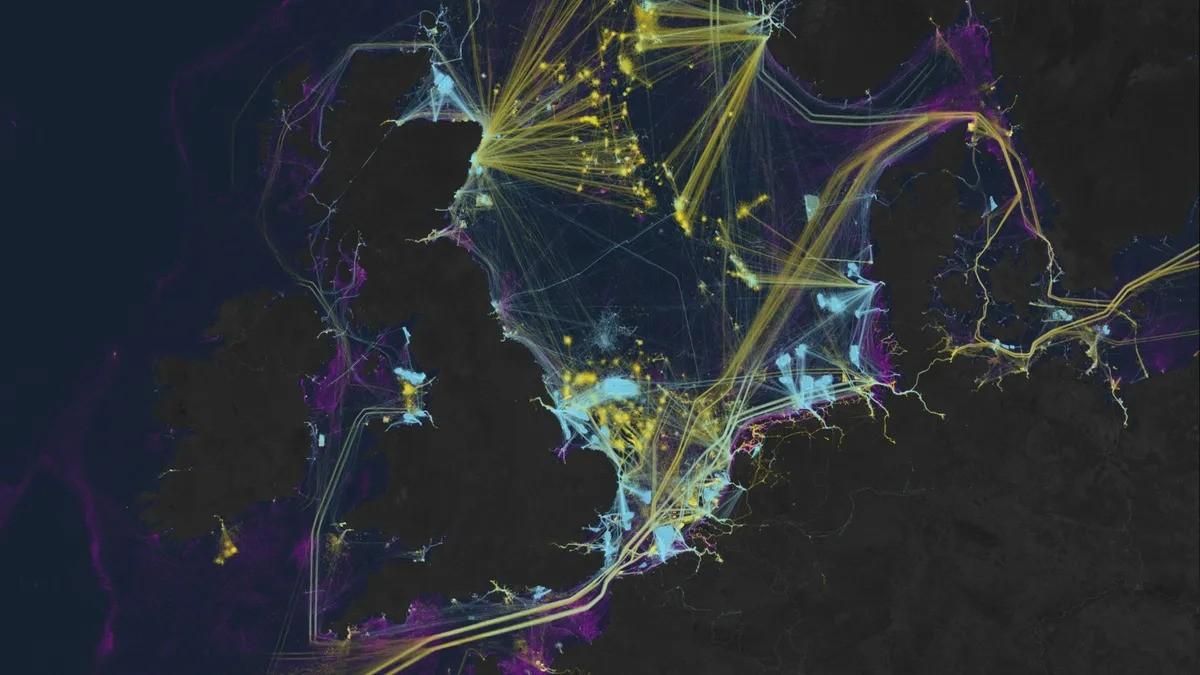The ocean, a vital component of global trade and sustenance, plays a pivotal role in the lives of over one billion people who rely on it as their primary food source, with 260 million individuals employed in global marine fisheries.
Approximately 80% of all traded goods traverse the seas, and nearly 30% of the world’s oil is extracted offshore. Despite its importance, monitoring human activities at sea is challenging due to limited vessel-tracking systems, proprietary data, and vessels not mandated to use tracking devices.
To address these challenges, a recent study utilized satellite imagery from 2017 to 2021 to create a comprehensive global map of major industrial activities at sea. This mapping revealed previously unknown details about fishing activities, including potential illegal practices such as overfishing or fishing in restricted areas. The information, accessible for free by any country, sheds light on concealed maritime activities, exposing what the researchers term “dark” zones.
Between 2017 and 2021, an average of 63,300 vessel occurrences were detected globally at any given moment, with approximately half being fishing vessels. Alarmingly, 72–76% of globally mapped industrial fishing activities were not reported in public monitoring systems, indicating significant underreporting. Machine learning and satellite imagery were instrumental in formulating this global map, providing insights into the extensive human use of the ocean.
Moreover, the collected information can be employed to measure greenhouse gas emissions from ships and offshore activities, aiding in the development of policies aimed at reducing overall emissions. The study also offers a snapshot of how industrial use of the ocean is evolving, demonstrating that while COVID-19 impacted fishing activity, it decreased less than other ocean industries.
The analysis covered over 15% of the ocean, focusing on areas with more than 75% of industrial activity, revealing the concentrated nature of vessel activity. Asia dominated global vessel activity, accounting for 67%, followed by Europe (12%) and North America (7%). Contrary to publicly available data, the mapping exposed that Asia far surpasses Europe in fishing activity within their borders.
The study highlights the growth of the “blue economy,” valued at 1.5–2.5 trillion dollars, encompassing offshore renewable energy, aquaculture, and mining. However, this economic expansion contributes to environmental degradation, with a third of fish stocks operating beyond sustainable levels and 30–50% of critical marine habitats lost due to human industrialization. The research, published in the journal Nature, emphasizes the importance of informed policies to address the environmental impact of the expanding blue economy.

